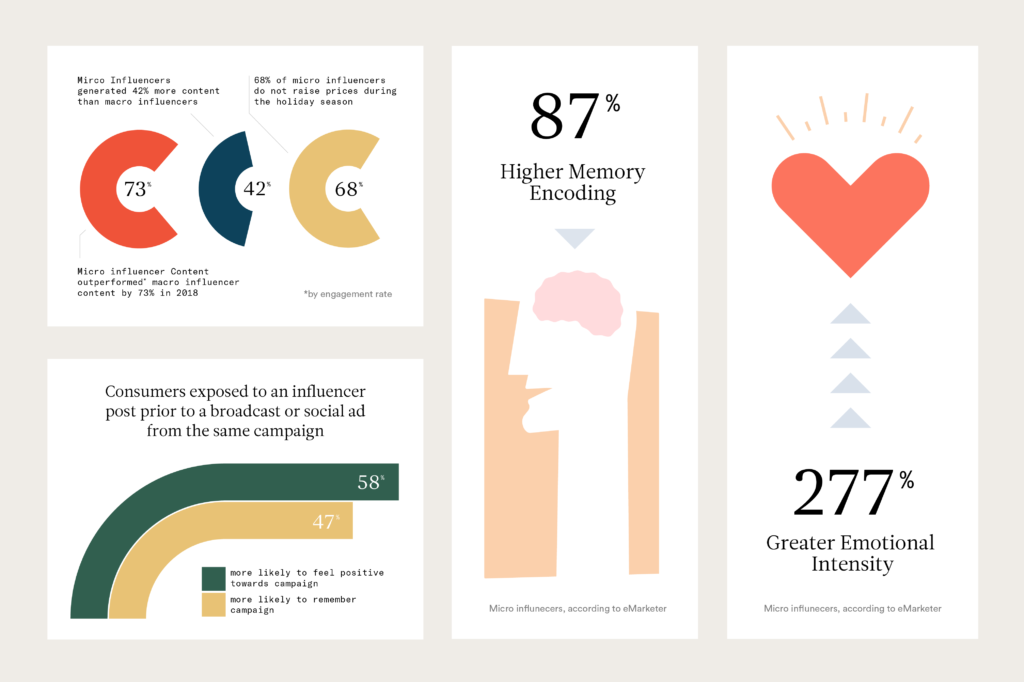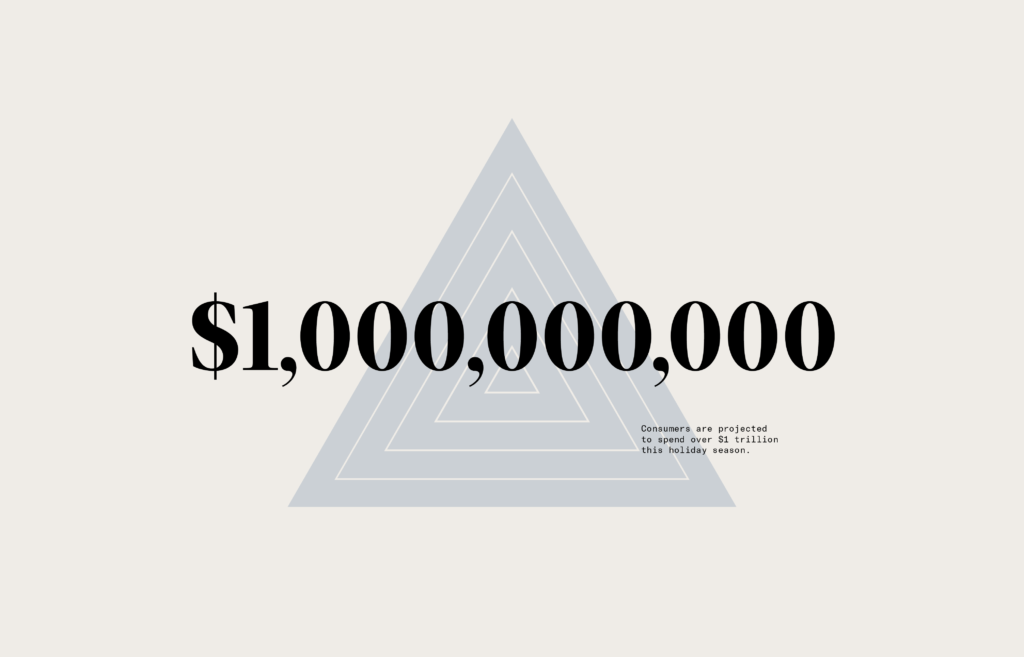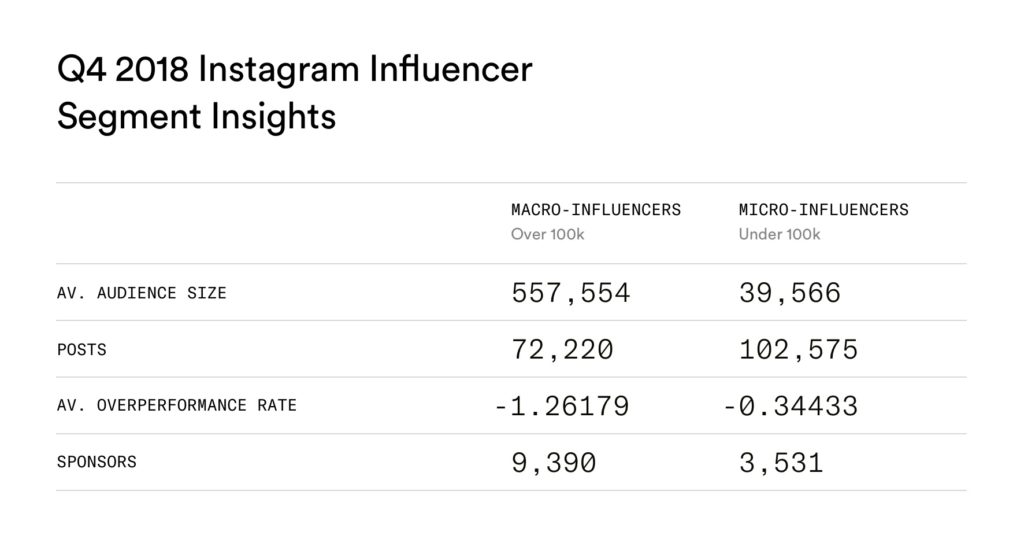While influencer marketing continues to mature into its own media channel, executing, measuring, and benchmarking is particularly essential.
Social Studies has compiled its first-ever seasonal influencer marketing study by tracking Instagram partnerships from Q4 2018 to Q4 2019 YTD and surveying the influencer community to help marketers fine-tune and hit Q4 goals and make the most out of incremental end-of-year dollars.

The Landscape
To continue 2018’s trend, marketers will allocate a large percentage of their holiday budgets to social media marketing. While CPAs spike during this time, the paid social landscape will become even more crowded and less effective yet again this year.
All marketers are asking how to make the most of these dollars to attract the over $1 trillion that consumers are projected to spend this holiday season.

Influencer As Media Channel
As influencer marketing continues to prove its value, leveraging the power of individual voices is the answer. According to eMarketer, influencer marketing generates up to 277% greater emotional intensity and 87% higher memory encoding than other channels. Consumers exposed to an influencer post prior to a broadcast or social ad from the same campaign were 58% more likely to feel positive toward it and 47% more likely to remember it.
Consumers exposed to an influencer post prior to a broadcast or social ad from the same campaign were 58% more likely to feel positive toward it.
emarketer.com
But Not All Influence Is Created Equal
As the landscape continues to evolve at lightning speed, who your brand partners with is essential to an effective campaign. Macro-Influencers (those with more than 100,000 followers on their individual social channels) increasingly struggle to justify their rates, counter fraud, and prove ROI.
Alternatively, Micro-Influencers (those with fewer than 100,000 followers) are key to making the most of your marketing dollars. The shift to smaller but more voices started taking hold in 2018 and has accelerated over the last 12 months.

Social Studies analyzed 223,057 branded posts across 45,257 accounts between October 1 and December 31, 2018. Overperformance rates are based upon a post’s interactions/the account’s benchmark interactions. In Q4 2018, rates ranged from 36 to -1446.
Key Findings
Q4 2018
- Brands were 3x as bullish on Macro-Influencers
- Micro-Influencer content out-performed (based on engagement rates) Macro-Influencer content by 73%
- Brands received 42% more content than those who partnered with Macro-Influencers
Q4 2019 YTD
- In the first 2 weeks of October 2018 vs 2019 we are starting to see a seismic shift in thinking:
- While Macro-Influencer partnerships were flat YoY, Micro-Influencer partnerships increased 150%
Micro-Influencer content out-performed Macro-Influencer content by 73% in Q4 2018.
5 Influencer Principles for Brand Leaders
Now is the moment for brands to refocus their Q4 2019 influencer plan and shift dollars to an underutilized and targeted Micro-Influencer ecosystem in order to drive increased content, performance, and engagement.
1. Plan for Q4…in Q4.
Alternative media channels typically require more lead time, but influencer marketing planning is just kicking off and can be executed and optimized in real-time. According to our 2019 Holiday Micro-Influencer Survey, 55% of Micro-Influencers reported November and December as their busiest months, yet only 40% of respondents are currently in discussions with brand partners for the holidays.
2. Micro-Influencers = Efficiency + Scale.
While paid media rates spike in Q4, 68% of Micro-Influencers report that they do not raise their rates for the holidays. Consequently, a larger volume of Micro-Influencers and Nano-Influencers can reach the same or higher cumulative audiences without increased spend.
3. Partner with Micro-Influencers To Shape Strategy.
Survey respondents overwhelming expressed confidence in the social platforms they use and content types that resonate best with their followers. Giving influencers creative freedom allows marketers to effectively reach niche and local audiences.
4. Build Relationships in Q4.
Use short-term holiday campaigns to test and develop Micro-Influencer opportunities and create long-term relationships with the highest performers.
5. Test Your Marketing Strategy NOW!
Use remnant dollars at the end of the year to try out larger 2021 marketing initiatives.
Diversify your marketing strategy now, over-deliver on 2022. Interested in learning more?
Let’s Talk